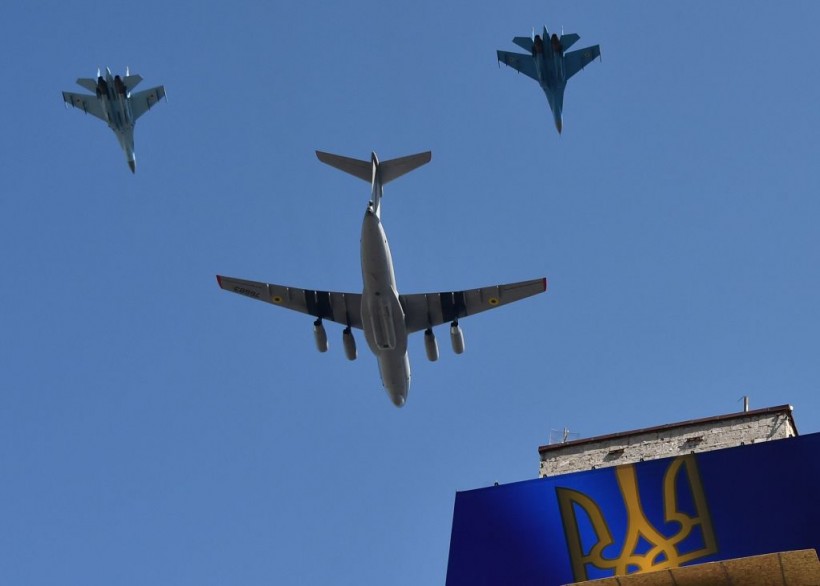The US Navy recently deployed an unmanned aerial vehicle (UAV) following a similar launch with the US Coast Guard US 5th Fleet's Task Force 59.
But the Navy took things to another level by integrating AI into its recent event called Digital Horizon.

(Photo : GENYA SAVILOV/AFP via Getty Images)
Military aircrafts flow over Kiev central street during a military parade on August 24, 2018 to celebrate the Independence Day, 27 years since Ukraine gained independence from the Soviet Union.
Digital Horizon
The Digital Horizon event aims to accelerate the Navy's efforts in integrating unmanned systems and building the very first fleet of unmanned surface vessels in the world by the end of next summer.
The US 5th Fleet is working to enhance the US and regional navies' ability to see above and below the water with this current venture.
Vice Adm. Brad Anderson, the US 5th Fleet, US Naval Forces Central Command, and Combined Maritime Forces commander, stated that by utilizing these emerging unmanned technologies and fusing them with AI, they will reinforce deterrence and improve regional maritime security.
In September 2021, Cooper created a team called Task Force 59 to facilitate the adoption of new technology within the US 5th Fleet. The task force has launched various unmanned systems from operational centers in Bahrain and Aqaba, Jordan, since its inception.
A total of 15 different types of unmanned systems will be brought by 17 industry partners for Digital Horizon, 10 of which will be used for the first time by the US 5th Fleet.
A tethered UAV from Easy Aerial and two vertical take-off and landing systems, the V-BAT from Shield AI and the Flexrotor from Aerovel, will also be included in the unmanned aerial vehicles.
The fleet will also include the following: Robotics Data Xplorer, Open Ocean Saildrone Explorer, Marine Advanced Robotics WAM-V, Seasats X3, and SeaTrac SP-48, Elbit Systems Seagull, L3Harris Arabian Fox MAST-13, Exail DriX, MARTAC T-38 Devil Ray, and Ocean Aero TRITON.
Aerovel Flexrotor UAV
The Navy conducted a naval drill in the Middle East. On December 7, the USCGC (United States Coast Guard Cutter) Emlen Tunnell (WPC 1145) was used to launch an Aerovel Flexrotor UAV.
Emlen Tunnell is of the new Sentinel-class fast response cutters by the Coast Guard that is currently in Bahrain where US 5th Fleet is headquartered.
Interesting Engineering reports that an infrared camera aboard the Flexrotor can support intelligence, surveillance, and reconnaissance (ISR) missions by providing real-time footage during the day. It demonstrates the Navy's potential in combining unmanned systems and artificial intelligence.
Additionally, the UAV can broadcast data and video to command centers, giving unmanned programs access to a stronger communication network.
More than 25,000 hours, or 12 years of testing from nine to five, five days a week, were spent by Task Force 59 operating USVs in regional seas during the previous year. In particular, the Saildrone Explorer USV has gone up to 220 days without refueling or maintenance while at sea, as per the Navy.
Related Article: US Navy's Radar-Equipped Drones Prevent Hypersonic Missiles 10x the Speed Of Sound But Can't Detect Slower Rockets?









